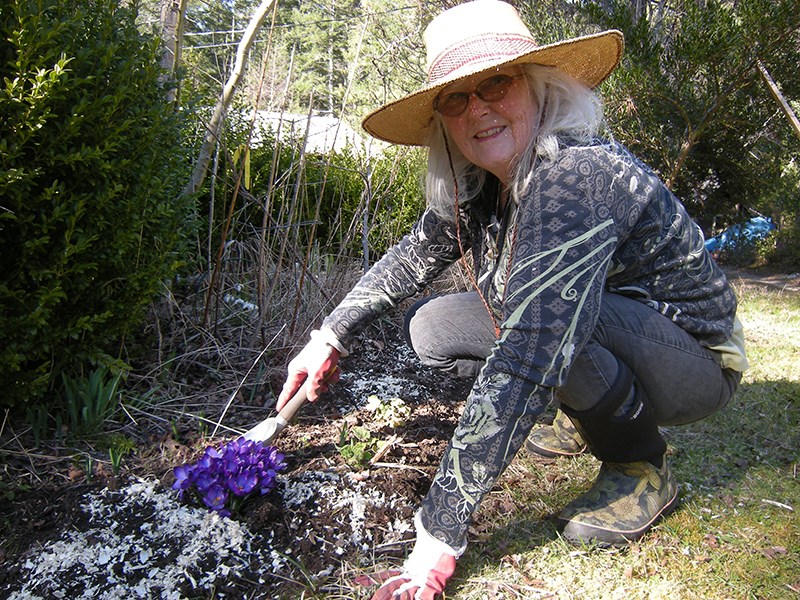No one is born a gardener. We all have to learn how, and the longer we work at it the more we learn.
One of the tragedies of modern society is that the natural process of passing experiential learning from one another has become fragmented. Despite books and magazines, the most meaningful and insightful knowledge of gardening comes from experience and from the help and instruction of others.
Why garden? What can be more rewarding than preparing food fresh from the garden, or opening a jar of tomatoes, or strawberry jam, in the middle of January? We get exercise, fresh air, good food, the satisfaction of watching things grow, and a sense of union with nature and the world around us.
To begin, a garden needs soil, water and sun. You can build or even import soil, water can be piped in, can be collected from rain and can be conserved with mulch. Sun on the other hand is much harder to control.
SUN: It is important to choose a location that provides the longest, most consistent sun throughout the growing season. Vegetables need a good eight hours of sun; some plants require more. That’s not always within our control, but you can place the hot-loving plants where the sun is best.
These would be your tomatoes, peppers, eggplant, squash, corn and basil. Leafy greens and cool season crops are a bit more tolerant of lower light, and shade may help extend growth in plants that bolt when temperatures rise.
Most herbs thrive in full sun and can tolerate poorer soil and drier conditions. Growing vegetables in planters allows you to relocate pots as the sun changes throughout the season. Grow boxes enable you to create good soil where there is none, and to place it in the best location.
WATER: Water deeply and less frequently to encourage better, deeper root growth. For newly planted seeds and transplants use a gentle spray more regularly to keep the planting medium moist until the seeds emerge. Once transplants show new growth, back off on the watering. When you water, water the soil, not the leaves, unless you are using a foliar feeding, and water early in the day.
Watering in late afternoon and evening does not allow drying time and can encourage mildew and fungus infections. Watering on hot sunny afternoons can scorch the leaves and much of the surface water begins to evaporate before it can penetrate the soil to the roots. A shallow depression around your plant can ensure the water does not run off immediately into paths instead of to your plant.
Using a barrel for rain water means the water is usually warmer than from a tap. This is especially beneficial for greenhouse plants. Nutrients can be incorporated into the water with manure, seaweed, compost, and even decomposing weeds.
SOIL: Work the soil well before planting. The weeds you remove now will not plague you later. Try to catch them before flowering and place in either a weeds-only compost well away from the garden, or stuff them into a black plastic bag or bin and let the sun decompose them. Break up the soil and add conditioners to improve the texture: sand, peat, compost, manure, leaves, grass clippings and sawdust will all help.
Vermiculite and perlite help improve both texture and water retention but are rather costly to use large scale. However, a judicious amount worked into a row before sowing tiny seeds will help them emerge.
Organic matter not only improves texture, it increases water retention and incorporates the bacteria and enzymes that are important to free up valuable nutrients. What you want to attain is a soil that will form a ball when clenched in your hand, but will break apart easily.
FEED YOUR SOIL: We see the letters NPK (nitrogen, phosphorus and potassium) labelled on fertilizer bags, but it is also the valuable micronutrients, the enzymes and organic components that are important, which are more present in natural fertilizers. Plants have very individual needs, and the makeup of your soil can change according to location. It is up to us to observe and fine-tune as we go. Nutrient-rich soils create healthy vegetables.
PLANTS: Starting with healthy seed and healthy plants is a good beginning. If you save your seed, choose your biggest, healthiest plant to reserve for seed collection. From this, save the biggest, fattest, best-shaped seeds. The same goes for selecting plants. Look for good colour, a strong stem, bushy growth and healthy roots.
If the plant is an annual and in bloom, unless it is in a large pot, it may be stressed and possibly pot-bound. These plants don’t normally perform well. If you buy or start a plant and it is too early to plant out, re-pot it into a larger pot. By the time it is ready to plant out it will be larger with a better root system.
When selecting plants or seeds, be realistic. Grow what you like, what you might normally pick up at the store, and in a proportion that fits your needs. That being said, be inventive and try something new. There are so many different varieties available: heritage tomatoes, novelty plants with unusual colours and ethnic foods. It’s always nice to get a little surprise mixed in with the familiar.
Enjoy your garden in all its aspects.
Lin Morrison is a member of Powell River Garden Club.



